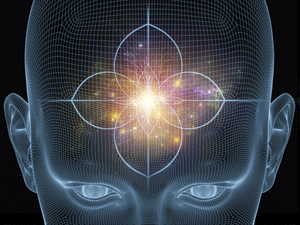EXCERPT from my new blog post and interview with Dr. Joseph Cambray, Jungian analyst and Provost at Pacifica Graduate Institute:
"...Recent analyses of the fractal qualities that are inherent in Jackson Pollock’s drip paintings, which reveal Pollock had “spontaneously intuited a way to get at the optimal amount of fractal density.” It’s that kind of intuitive knowing from nature—not from a cognitive rational process—which, when they emerge in therapy and supervision, are art forms...."
Psychotherapy is pervasive in contemporary culture. Even if you’re not a therapist yourself, if you’re taking the time to read this post, chances are good that either you or someone close to you has been involved in therapy at some point in their lives.
And, while you may feel you have a good understanding of what happens in the therapy room, there may be more than meets the eye. Do you ever wonder, for example, what has to occur in the therapeutic process so that the basic experience is what it needs to be for both the client and the therapist? How does a therapist tap into the unconscious in order to help the client be more of “who they are”? How does synchronicity—and the interactive field that emerges between two individuals—serve up messages from the unconscious for the benefit of the work? More, where does the therapist her/himself turn for help in honing their own intuition and skills that ultimately contribute to their own individuation process in working with clients?
These are all questions I asked Jungian analyst, Dr. Joseph Cambray, when he agreed to take a few minutes away from his busy schedule as provost at Pacifica Graduate Institute. Dr. Cambray is co-leading a 10-week course, On Becoming a Supervisor in Depth, along with Linda Carter, Avedis Panajian, Lionel Corbett, and Patricia Katsky starting March 3, 2016, at Pacifica.
Joe Cambray is not only eminently qualified to offer insights on what goes on between a client and therapist in the therapy room, he also has a long history around the process of supervising other therapists, having taught a course on becoming a supervisor for nearly 12 years at Harvard Medical School. More, his landmark book, Synchronicity: Nature and Psyche in an Interconnected Universe, also reveals how Joe is uniquely qualified to help each of us identify ways in which unconscious patterns are at work in our lives and in our journeys of individuation.
Joe describes his own perspective on what has to happen in the therapy room so that the basic experience is what it needs to be. While the focus is on the internal life of the person and on them becoming more of who they are, he notes, there is a symmetry between the client and the therapist. The therapist pays attention to his or her own reactions within the dialogue, and uses them to guide him.
Through clients’ dreams and through certain events in their lives, it is possible to see how the unconscious is mobilized and activated. More, there is a field that transpires between the therapist and client—what Jung himself might have described as “a multi-dimensional field within the limited frame of our own sensory perception.” Therapists hone certain skills and processes that enable them to tune into what’s emerging into the field between the two individuals. As images arising in the therapy begin to create resonance, it enables us to perceive how the archetypal field is... (CLICK HERE to read the full post and access the audio interview on Pacifica Post)
